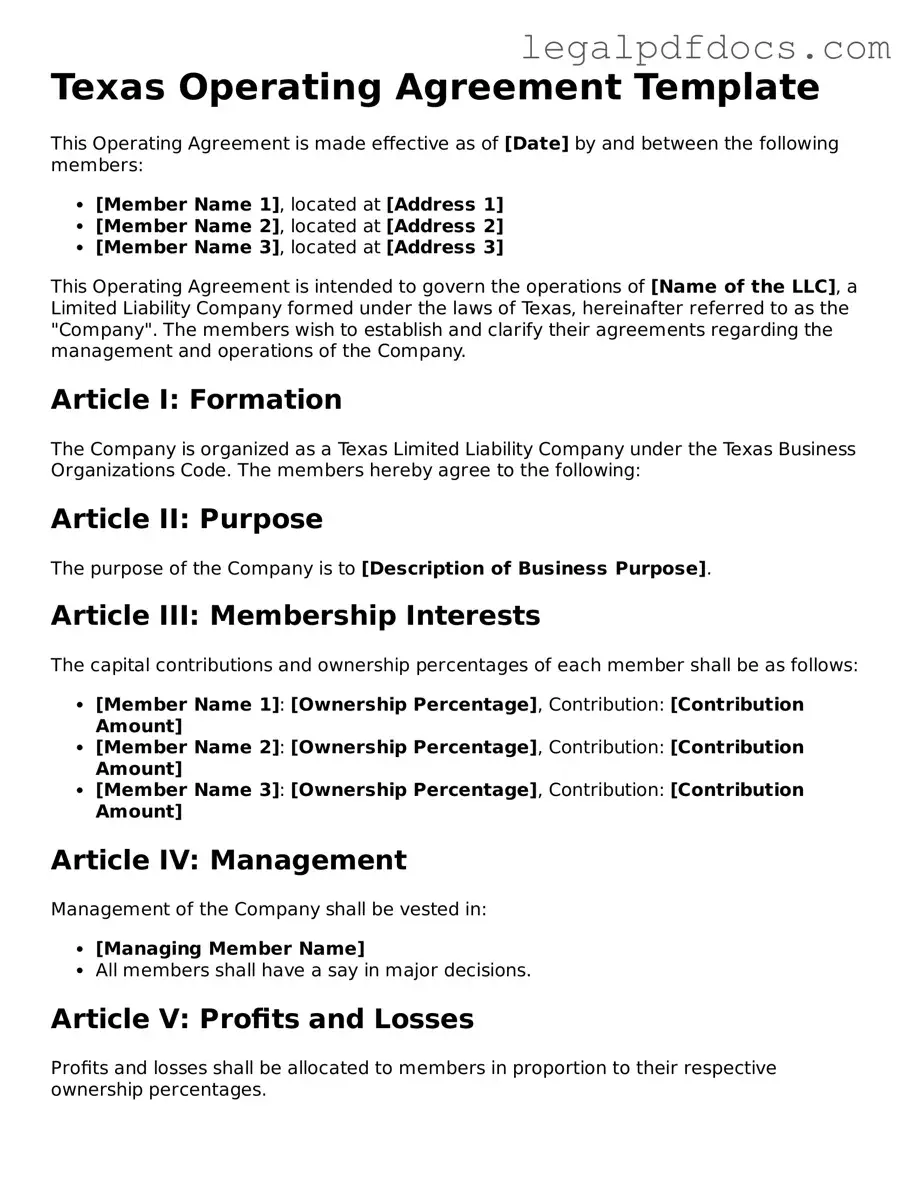In the dynamic landscape of business formation, particularly within the realm of limited liability companies (LLCs), the Texas Operating Agreement plays a pivotal role. This essential document serves as the backbone of an LLC, outlining the internal workings and governance of the company. It delineates the rights and responsibilities of members, establishes the framework for decision-making, and provides clarity on profit distribution and management structures. Moreover, the agreement addresses critical aspects such as member contributions, voting procedures, and the process for adding or removing members. By setting forth these guidelines, the Texas Operating Agreement not only helps prevent misunderstandings among members but also serves as a safeguard against potential disputes. Understanding the significance of this document is crucial for anyone looking to establish or operate an LLC in Texas, as it lays the groundwork for a successful and harmonious business relationship.
